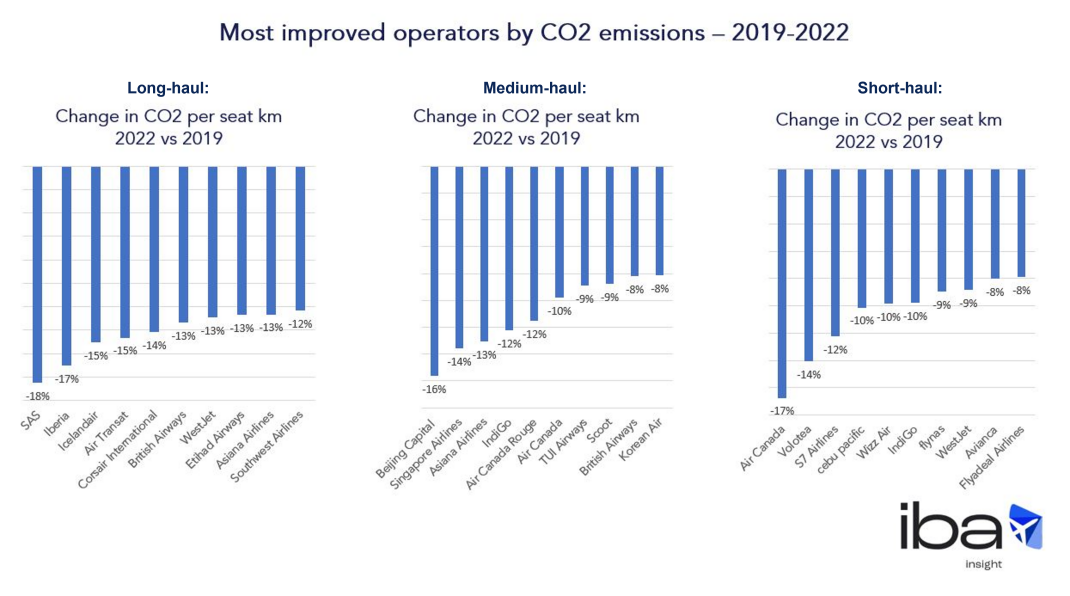13/06/2022
Aviation intelligence from IBA Insight has revealed that key global airlines have reduced their scope one CO2 emissions by up to 17% since 2019. This follows an overall drop of 5.9% in CO2 emissions from commercial aviation since January 2018 (based on CO2 per-seat kilometer).
Image: Dylan T, Wikimedia Commons
IBA is uniquely positioned to help you navigate the evolving world of aviation environmental and social governance (ESG). From emissions monitoring and forecasting to ESG strategy and ratings, our ESG consulting services equip you with independent third party intelligence, and the tools you need to succeed.
Learn more about ESG Consulting
Using IBA's Carbon Emissions Calculator, we can reveal the airlines who have driven the largest reductions in their CO2 output over the past 3 years.

SAS has reduced its CO2 output per seat Kilometre by 18% since 2019, the most significant improvement among all operators in our ranking. This has been largely driven by the replacement of older Airbus A340 aircraft with new Airbus A350 aircraft, as well as the continued strategic use of the Airbus A330. A similar approach has been taken by Spanish flag carrier Iberia, resulting in a 17% reduction in scope one emissions.
The exit of older Airbus A330 aircraft from the Beijing Capital portfolio has helped to drive a 16% reduction in CO2 emissions. This has been supported by increased use of the A320neo in replacement of older A320ceo types. Singapore Airlines has also shown notable improvement, largely driven by a focus on new generation aircraft including the Boeing 737 MAX, Boeing 787, and Airbus A350.
Air Canada stands out in the short haul space with a 17% reduction in Co2 emissions since 2019. The significant reduction in the number of operational A319 aircraft has been the key driver behind this. Fleet data from IBA Insight reveals that the Canadian flag carrier has only 4 active A319 aircraft as of June 2022, a 75% reduction on the active fleet in June 2019.
IBA Insight flexibly illustrates multiple asset, fleet, and market positions, actual and potential, to inform client choices and identify acquisition opportunities. Immediate access to crucial aircraft, engine, lease rate and fleet data eases appreciation of historic and future aircraft concentrations and operator profiles.